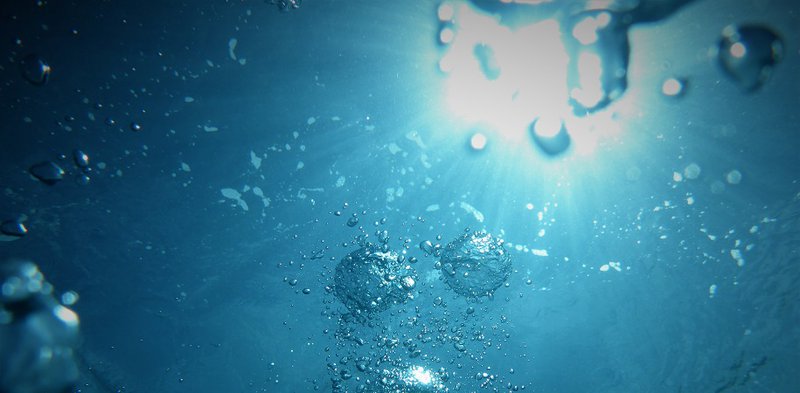
The element of life: water tests explained
What do water laboratories do? In this article, we explore this question and put four questions to Astrid Hackenesch-Rump from Berliner Wasserbetriebe.
Whether for drinking, food production, purification, or cooling: the uses and locations of water are diverse. The range of testing services offered by specialized water laboratories is correspondingly broad.
Microbiological analyses
A large proportion of water samples are used to test for microorganisms such as bacteria. A prominent example is Legionella: a strain of bacteria that can cause pneumonia if inhaled, and which multiplies rapidly in standing water at temperatures of 25°C to 40°C. Since this can happen in water pipes in hospitals, schools, hotels, or residential buildings under certain circumstances, regular sampling is required by law in many countries. Water samples are taken from various tapping points in the building and then analyzed in the laboratory. The standard DIN EN ISO 11731 (Water quality - Counting of legionella) is used for the count. Common detection methods for Legionella are fluorescence microscopic detection, in which the bacteria are made visible by fluorescently labeled antibodies, or the cultivation of visible colonies on special culture media. Other common microbiological tests are used to detect enterococci (DIN EN ISO 7899) or coliform bacteria (EN ISO 9308), which indicate contamination of the water with fecal matter.
Toxicological testing of wastewater samples
Another important type of water testing is toxicity testing, which tests how harmful a water sample is to organisms, depending on the contaminant concentration. Such tests are used primarily for wastewater samples. Common methods include the luminescent bacteria test (DIN EN ISO 11348-2 L34), which uses bacteria of the Vibrio fischeri species that glow when their metabolism is functioning normally. The more the glow diminishes after contact with the sample, the higher the toxicity. Another frequently used test is the daphnia test (DIN 38412-L30), in which the motility of small crustaceans is used as an indicator of toxicity. In the fish egg test (DIN EN ISO 15088), on the other hand, fish eggs of the zebrafish are brought into contact with the sample and then observed under the microscope to see how many eggs continue to develop without adverse effects.
Determination of individual ingredients
In addition, water laboratories offer a wide range of detection methods for individual substances that may be relevant for health reasons, for example. Examples are mercury, which can be detected by atomic fluorescence spectrometry (DIN EN ISO 17852), and aluminum, which can be determined by atomic absorption spectrometry (DIN EN ISO 12020). Various test methods also exist for detecting phosphorus, cyanides, lead, and other substances.
Four questions for Astrid Hackenesch-Rump from Berliner Wasserbetriebe (BWB).
Which samples are most frequently examined in BWB's water laboratory?
The majority of all samples analyzed in our laboratory come from Berliner Wasserbetriebe itself. Of these approximately 63,000 samples, about two-thirds are wastewater samples taken from the more than 200,000 manholes in Berlin's 9,700 km of sewer network.
What have less mundane tests there been in your laboratory?
In recent years, we have occasionally been able to detect the toxin anatoxin-a, produced by certain blue-green algae, in samples taken from Berlin waters such as Lake Tegel. Since this toxin can be fatal to dogs that drink water from the lake, it is very important to be able to detect elevated concentrations of the toxin at an early stage through special sampling in cases of suspicion.
What challenges do you currently see for water laboratories?
In addition to classical target analysis, in which water samples are analyzed for residues of certain substances, non-target analysis is also becoming increasingly important. Here, samples are analyzed for unknown substances, for example using liquid chromatography in conjunction with mass spectrometry (LC-MS). One challenge is then to evaluate the results of the analysis, which are based on the substances found, and to draw the appropriate conclusions together with relevant stakeholders, such as the Federal Environment Agency. Drug development is one example where the testing of various residues plays a major role.
What trends are you observing in the area of water testing?
More and more end consumers are asking us about lead analyses, which we now offer free of charge for households with pregnant women or infants up to twelve months old. Lead pipes can still be found in so many Berlin buildings today and has recently surprised us in this dimension.
Finding the right water laboratory
How do you find a water lab with the right accreditations and other requirements for a specific testing job? Free online search platforms such as testxchange can help here and save time in searching, selecting, and communicating with the lab. If you are currently looking for a laboratory, give it a try right now!